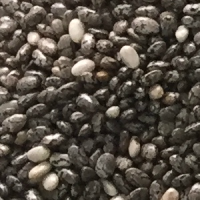 Chia seed is obtained most commonly from Salvia hispanica of the Lamiaceae family. Other plants referred to as “chia” include “golden chia” (Salvia columbariae) and the flowering herbaceous perennial Salvia polystachya, which is rarely cultivated and the seeds are not used. The seeds of Salvia columbariae are used medicinally and for food.
Chia seed is obtained most commonly from Salvia hispanica of the Lamiaceae family. Other plants referred to as “chia” include “golden chia” (Salvia columbariae) and the flowering herbaceous perennial Salvia polystachya, which is rarely cultivated and the seeds are not used. The seeds of Salvia columbariae are used medicinally and for food.
The sixteenth-century Codex Mendoza provides evidence that it was cultivated by the Aztec in pre-Columbian times and economic historians say it may have been as important as maize as a food crop. It was given as an annual tribute by the people to the rulers in 21 of the 38 Aztec provincial states.[1] Chia seeds served as a staple food of the Nahuatl (Aztec) cultures of Central Mexico. Jesuit chroniclers placed chia as the third most important crop in the Aztec culture, behind only corn, beans, and ahead of amaranth. Offerings to the Aztec priesthood were often paid in chia seed.
Ground or whole chia seeds are still used in Paraguay, Bolivia, Argentina, Mexico, and Guatemala for nutritious drinks and food.[2][3]Today, chia is cultivated on a small scale in its ancestral homeland of central Mexico and Guatemala. Chia is grown commercially in Argentina, Bolivia, Ecuador, Guatemala, and Mexico.
From Wikipedia.



